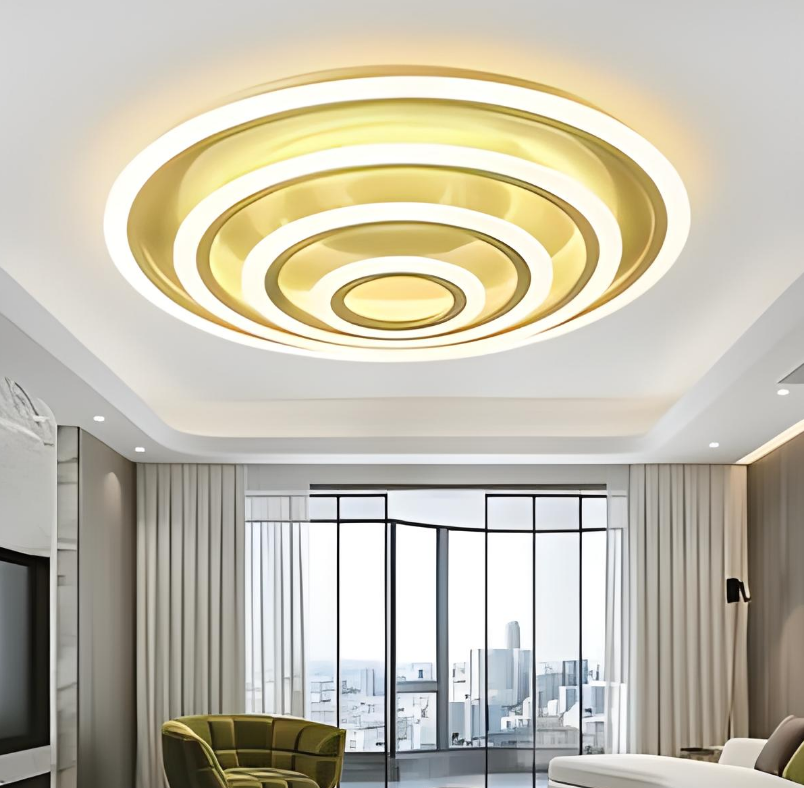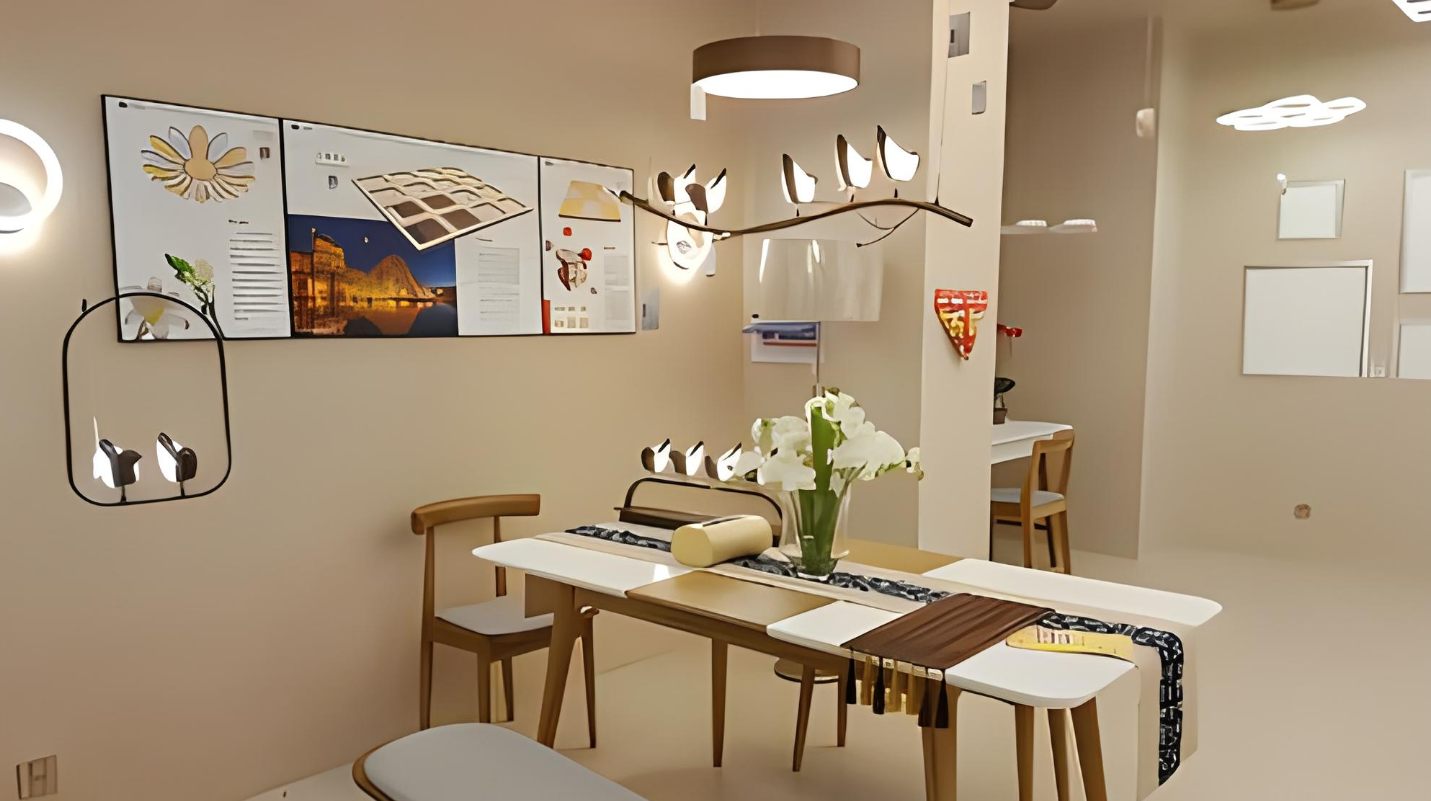Ceiling lights play a crucial role in creating a well-lit space. They provide the primary source of illumination in a room and have a significant impact on the overall mood and productivity of the space. Whether you’re working, relaxing, or entertaining guests, having the right lighting can make all the difference.
Proper lighting is essential for both functional and aesthetic reasons. From a functional standpoint, ceiling lights ensure that you have enough light to see and perform tasks efficiently. Whether you’re reading a book, cooking in the kitchen, or working on a project, having adequate lighting is crucial for productivity and safety.
On the other hand, lighting also has a significant impact on the ambiance and mood of a room. The right lighting can create a warm and inviting atmosphere, while harsh or dim lighting can make a space feel cold and unwelcoming. By choosing the right ceiling lights, you can enhance the overall aesthetic of your space and create an environment that is both functional and visually appealing.
Types of Ceiling Lights: From Chandeliers to Flush Mounts
When it comes to gogohm ceiling lights, there are various types to choose from, each with its own unique characteristics and benefits. Some popular types include chandeliers, pendant lights, flush mounts, recessed lights, and track lighting.
Chandeliers are often seen as statement pieces and are commonly used in dining rooms or entryways. They come in various styles and sizes, making them suitable for different types of decor. Chandeliers provide both ambient and task lighting, making them versatile options for any space.
Pendant lights are another popular choice for ceiling lighting. They are suspended from the ceiling by a cord or chain and come in various shapes and sizes. Pendant lights are often used in kitchens or over dining tables to provide focused task lighting.
Flush mounts are ideal for rooms with low ceilings as they sit flush against the ceiling. They provide general ambient lighting and are available in a wide range of styles to suit any decor. Flush mounts are commonly used in bedrooms, hallways, and bathrooms.
Recessed lights, also known as can lights or downlights, are installed into the ceiling and provide a clean and minimalist look. They are often used in kitchens, bathrooms, or living rooms to provide general lighting or highlight specific areas.
Track lighting consists of a series of adjustable light fixtures mounted on a track. This type of lighting is ideal for highlighting artwork or specific areas in a room. Track lighting is commonly used in galleries or modern spaces.
Each type of ceiling light has its own pros and cons. Chandeliers and pendant lights add a touch of elegance and can serve as focal points in a room. However, they may require additional maintenance and cleaning due to their intricate designs. Flush mounts and recessed lights are more practical options for low ceilings but may not provide as much visual impact. Track lighting offers flexibility in terms of directing light but may not be suitable for every space.
Choosing the Right Size and Style for Your Space
When selecting a ceiling light, there are several factors to consider to ensure that it is the right size and style for your space. The size of the room, the height of the ceiling, and the purpose of the light all play a role in determining the appropriate size and style.
Firstly, consider the size of the room. A small room may be overwhelmed by a large chandelier, while a small pendant light may get lost in a large space. Take measurements of the room and consider the scale of existing furniture and decor to determine the appropriate size for your ceiling light.
Next, consider the height of the ceiling. Low ceilings may require flush mounts or recessed lights to avoid creating a cramped feeling. High ceilings, on the other hand, can accommodate larger chandeliers or pendant lights to make a statement and fill the vertical space.
The purpose of the light is also important to consider. If you need task lighting, such as in a kitchen or office, choose a light that provides focused illumination. If you’re looking for ambient lighting, consider a light that provides a soft and diffused glow.
In terms of style, choose a ceiling light that complements the overall decor of the room. Consider the existing furniture, color scheme, and architectural features to ensure that the light blends seamlessly with the space. Whether you prefer a modern, traditional, or eclectic style, there are plenty of options available to suit your taste.
The Benefits of LED Lighting: Efficiency and Longevity
LED lighting has become increasingly popular in recent years due to its numerous advantages over traditional bulbs. LED stands for Light Emitting Diode and refers to the technology used in these lights. Here are some of the benefits of LED lighting:
1. Energy Efficiency: LED lights are highly energy-efficient compared to traditional incandescent or fluorescent bulbs. They consume less electricity and convert a higher percentage of energy into light rather than heat. This not only reduces your energy bills but also has a positive impact on the environment.
2. Longevity: LED lights have an incredibly long lifespan compared to traditional bulbs. They can last up to 50,000 hours or more, which means you won’t have to replace them as frequently. This is especially beneficial for ceiling lights that are often hard to reach and require professional assistance for replacement.
3. Durability: LED lights are more durable than traditional bulbs as they are made from solid materials rather than fragile filaments or glass. They are resistant to shock, vibrations, and extreme temperatures, making them ideal for both indoor and outdoor use.
4. Instant On: Unlike traditional bulbs that take time to warm up and reach full brightness, LED lights turn on instantly at full brightness. This is particularly useful in areas where immediate illumination is required, such as hallways or staircases.
When choosing LED bulbs for your ceiling lights, consider the color temperature and brightness level. LED bulbs come in various color temperatures, ranging from warm white to cool white. Warm white bulbs emit a soft and cozy glow, while cool white bulbs provide a brighter and more energizing light. The brightness level is measured in lumens, with higher lumens indicating a brighter light output. Consider the purpose of the light and the desired ambiance of the room when selecting the appropriate color temperature and brightness level.
Creative Ways to Use Ceiling Lights: Statement Pieces and Task Lighting
Ceiling lights can be used in creative ways to enhance the overall design of a room. They can serve as statement pieces or provide task lighting for specific areas. Here are some ideas for using ceiling lights creatively:
1. Focal Point: Choose a chandelier or pendant light with an eye-catching design to serve as a focal point in a room. Hang it over a dining table, in an entryway, or in a living room to draw attention and add visual interest.
2. Layered Lighting: Combine different types of ceiling lights to create a layered lighting effect. Use recessed lights for general ambient lighting, pendant lights for task lighting, and wall sconces for accent lighting. This creates depth and dimension in a room while providing different levels of illumination.
3. Highlighting Artwork: Use track lighting or adjustable spotlights to highlight artwork or architectural features in a room. This draws attention to specific areas and adds a touch of drama to the space.
4. Task Lighting: Incorporate task lighting into your ceiling light design by using pendant lights or recessed lights above workspaces such as kitchen islands or desks. This provides focused illumination for tasks while adding a stylish element to the room.
How to Install Ceiling Lights: DIY vs. Professional Installation

Installing a ceiling light can be a relatively simple task that you can do yourself, or it may require the expertise of a professional electrician. Here are the steps for installing a ceiling light yourself:
1. Turn off the power: Before starting any electrical work, turn off the power to the circuit you will be working on. Locate the circuit breaker panel and switch off the corresponding breaker.
2. Remove the old fixture: If you are replacing an existing ceiling light, start by removing the old fixture. This typically involves unscrewing the mounting screws or nuts and disconnecting the wiring.
3. Install the mounting bracket: Attach the mounting bracket to the electrical box in the ceiling using the provided screws. Make sure it is securely fastened.
4. Connect the wires: Connect the wires from the ceiling to the wires of the new light fixture. Match the black wire to black, white wire to white, and green or bare wire to green or bare wire. Use wire nuts to secure the connections.
5. Attach the light fixture: Once the wires are connected, attach the light fixture to the mounting bracket using the provided screws or hardware. Make sure it is securely fastened.
6. Turn on the power: After double-checking all connections, turn on the power at the circuit breaker panel and test the light to ensure it is working properly.
While DIY installation is possible for those with basic electrical knowledge and skills, it is important to note that working with electricity can be dangerous if not done correctly. If you are unsure or uncomfortable with electrical work, it is best to hire a professional electrician to install your ceiling lights. They have the expertise and tools necessary to ensure a safe and proper installation.
Maintenance and Cleaning Tips for Ceiling Lights
To keep your ceiling lights looking their best and functioning properly, regular maintenance and cleaning are essential. Here are some tips for maintaining and cleaning different types of ceiling lights:
1. Chandeliers: Dust chandeliers regularly using a soft cloth or duster. For more thorough cleaning, remove the individual components and clean them with a mild detergent and warm water. Dry them thoroughly before reassembling.
2. Pendant Lights: Wipe pendant lights with a soft cloth or duster to remove dust and debris. If the pendant has a glass shade, clean it with a glass cleaner or a mixture of vinegar and water. Avoid using abrasive cleaners that may scratch the surface.
3. Flush Mounts: Dust flush mounts regularly using a soft cloth or duster. If the fixture has a glass or plastic cover, remove it and clean it with a mild detergent and warm water. Dry it thoroughly before reattaching.
4. Recessed Lights: Dust recessed lights regularly using a soft cloth or duster. If the trim is removable, remove it and clean it with a mild detergent and warm water. Dry it thoroughly before reattaching.
5. Track Lighting: Dust track lighting regularly using a soft cloth or duster. If the fixtures are adjustable, position them to access the bulbs for cleaning. Wipe the bulbs with a soft cloth to remove dust and debris.
It is important to turn off the power to the light fixture before cleaning to avoid any electrical hazards. If you are unsure about how to clean your specific type of ceiling light, refer to the manufacturer’s instructions or consult a professional.
The Role of Ceiling Lights in Interior Design: Creating Ambiance and Atmosphere
Ceiling lights play a crucial role in interior design as they have the power to create ambiance and atmosphere in a room. By choosing the right type of lighting and controlling its intensity, you can transform the mood of a space. Here are some tips for using ceiling lights to enhance the ambiance of your room:
1. Layered Lighting: Use a combination of different types of ceiling lights to create a layered lighting effect. This involves using multiple light sources at different heights and intensities to create depth and dimension in a room. For example, combine recessed lights for general ambient lighting, pendant lights for task lighting, and wall sconces for accent lighting. This allows you to control the overall brightness and create different moods in the space.
2. Dimmers: Install dimmer switches for your ceiling lights to have control over the intensity of the light. Dimmers allow you to adjust the brightness according to the desired ambiance or activity in the room. Lowering the lights creates a cozy and intimate atmosphere, while increasing the brightness provides a more energizing and vibrant feel.
3. Color Temperature: Consider the color temperature of the light bulbs when selecting your ceiling lights. Warm white bulbs emit a soft and cozy glow, creating a relaxed and inviting atmosphere. Cool white bulbs provide a brighter and more energizing light, making them suitable for areas where focus and productivity are required.
4. Directional Lighting: Use adjustable spotlights or track lighting to direct light towards specific areas or objects in a room. This draws attention to those areas and creates a focal point, adding visual interest and enhancing the overall ambiance.
By carefully selecting and controlling your ceiling lights, you can create a specific atmosphere that suits your desired mood and enhances the overall design of your space.
Using Ceiling Lights in Outdoor Spaces: Patios, Decks, and Porches
Ceiling lights are not limited to indoor spaces; they can also be used to enhance outdoor areas such as patios, decks, and porches. Outdoor ceiling lights provide both functional illumination and aesthetic appeal. Here are some tips for selecting the right outdoor ceiling light for your space:
1. Weather Resistance: When choosing outdoor ceiling lights, make sure they are designed to withstand outdoor conditions. Look for fixtures that are rated for wet or damp locations, depending on the specific area where they will be installed. These fixtures are built to withstand rain, humidity, and other outdoor elements.
2. Style and Design: Consider the overall style and design of your outdoor space when selecting ceiling lights. Choose fixtures that complement the architecture and decor of your home. Whether you prefer a modern, traditional, or rustic style, there are plenty of options available to suit your taste.
3. Lighting Levels: Determine the desired lighting levels for your outdoor space. If you plan to use the area for entertaining or dining, consider installing a ceiling light with adjustable brightness or a dimmer switch. This allows you to create different moods and adjust the lighting according to the specific activity.
4. Placement: Consider the placement of the ceiling lights to ensure they provide adequate illumination for the entire space. Install them strategically to avoid any dark spots or shadows. If you have a covered patio or porch, consider installing multiple ceiling lights to evenly distribute the light.
Outdoor ceiling lights can enhance the functionality and aesthetics of your outdoor spaces, allowing you to enjoy them day and night.
Trends in Ceiling Lights: Minimalism, Industrial, and Art Deco-inspired Designs
Ceiling light design trends are constantly evolving, with new styles and designs emerging each year. Here are some current trends in ceiling lights:
1. Minimalism: Minimalist design continues to be popular in interior design, and this extends to ceiling lights as well. Clean lines, simple shapes, and neutral colors are characteristic of minimalist ceiling lights. These fixtures blend seamlessly with various decor styles and can create a sleek and uncluttered look in any room. Minimalist ceiling lights often feature materials such as metal, glass, or acrylic, adding to their modern and understated aesthetic. Whether it’s a flush mount or a pendant light, minimalist ceiling lights provide a subtle yet stylish lighting solution that complements any minimalist or contemporary interior design theme.



